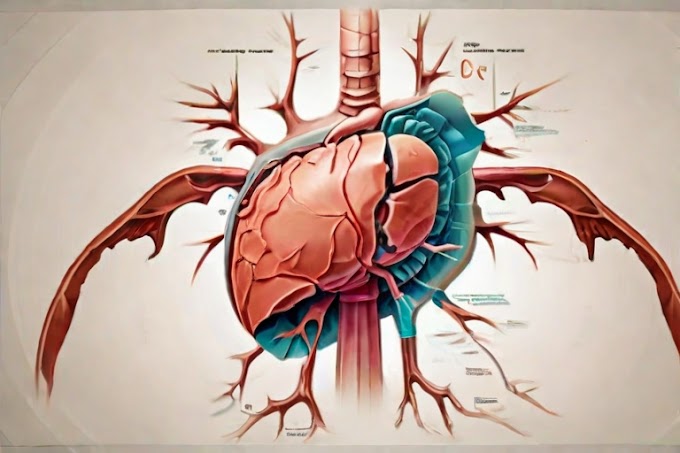Liver cancer, a formidable adversary, presents in various forms, each demanding unique considerations. In this exploration, we delve into the nuances of different types of liver cancer, shedding light on their characteristics, risk factors, and the evolving landscape of treatments. Join us on a journey through understanding, resilience, and hope.
Introduction
Liver cancer, though often challenging, is a topic of paramount importance. Understanding the distinct types and their intricacies is vital for early detection and effective management. Let's embark on this journey into the world of liver cancer.
Types of Liver Cancer
Hepatocellular Carcinoma (HCC)
Hepatocellular carcinoma, or HCC, stands as the predominant form of liver cancer, originating in the hepatocytes—the primary cells of the liver. Chronic liver diseases and infections such as hepatitis significantly elevate the risk of developing HCC.
Intrahepatic Cholangiocarcinoma
Intrahepatic cholangiocarcinoma, a less common variant, arises in the bile ducts within the liver. Factors like chronic inflammation of the bile ducts and liver fluke infections contribute to its occurrence.
Causes and Risk Factors
Understanding the root causes and risk factors associated with liver cancer is crucial for preventive measures. Chronic liver diseases, including cirrhosis, and infections such as hepatitis B and C, are prominent contributors.
Symptoms and Detection
Recognizing the symptoms of liver cancer, such as jaundice and abdominal pain, is pivotal for early detection. Diagnostic procedures, including imaging tests and biopsies, play a crucial role in confirming the presence of liver cancer.
Treatment Options
Navigating the treatment landscape involves a combination of surgery, chemotherapy, and emerging therapies. Tailoring treatment to the specific type and stage of liver cancer is essential for optimal outcomes.
Living with Liver Cancer
Living with liver cancer poses challenges, but support groups and lifestyle adjustments can significantly enhance the quality of life. Emotional and practical support are integral aspects of the journey.
Prevention Strategies
Preventing liver cancer involves proactive measures such as vaccinations for hepatitis and adopting a healthy lifestyle. Community engagement and awareness contribute to a collective effort in prevention.
Understanding HCC
Delving deeper into hepatocellular carcinoma involves understanding its origin in hepatocytes and recognizing key risk factors. This knowledge is foundational for informed decision-making in treatment and prevention.
Cholangiocarcinoma Details
Intrahepatic cholangiocarcinoma, originating in the bile ducts, presents its own set of challenges. Exploring its details, including associated risk factors, enhances our understanding of this less common type of liver cancer.
Diagnostic Journey
The diagnostic journey for liver cancer encompasses various tests, including imaging studies and biopsies. Navigating these procedures is essential for accurate and timely diagnosis.
Treatment Landscape
The evolving treatment landscape for liver cancer includes surgical interventions, chemotherapy, and targeted therapies. Staying informed about these options empowers individuals to make decisions aligned with their specific circumstances.
Support and Resilience
Acknowledging the importance of support networks and coping strategies is paramount in the face of liver cancer. Emotional well-being and resilience are integral components of the journey.
Prevention Measures
Beyond individual efforts, community engagement and awareness play a significant role in preventing liver cancer. Dispelling myths and fostering a culture of health contribute to a collective defense against the disease.
Global Impact
Examining the global impact of liver cancer through statistics provides insights into its prevalence and disparities in healthcare access. Understanding these variations informs global initiatives aimed at addressing the challenges posed by liver cancer.
Conclusion
In conclusion, navigating the complexity of liver cancer involves understanding its types, risk factors, and available treatments. Support networks, preventive measures, and global initiatives are crucial in the fight against this formidable disease. By staying informed and fostering resilience, individuals and communities can confront and overcome the challenges posed by liver cancer.
Frequently Asked Questions
What are the early signs of liver cancer?
- Early signs include unexplained weight loss, abdominal pain, and jaundice.
Can liver cancer be prevented?
- While not entirely preventable, vaccinations for hepatitis and adopting a healthy lifestyle can reduce the risk.
How is liver cancer diagnosed?
- Diagnosis involves imaging tests, blood tests, and, in some cases, a liver biopsy.
What treatment options are available?
- Treatment may include surgery, chemotherapy, and targeted therapies, depending on the type and stage of liver cancer.
Is liver cancer curable?
- The curability depends on the stage at which it is diagnosed. Early detection improves the chances of successful treatment.






